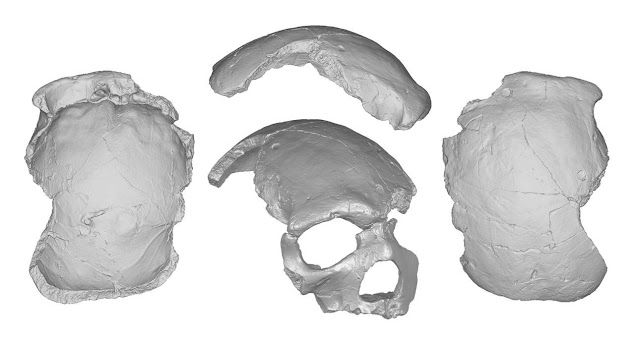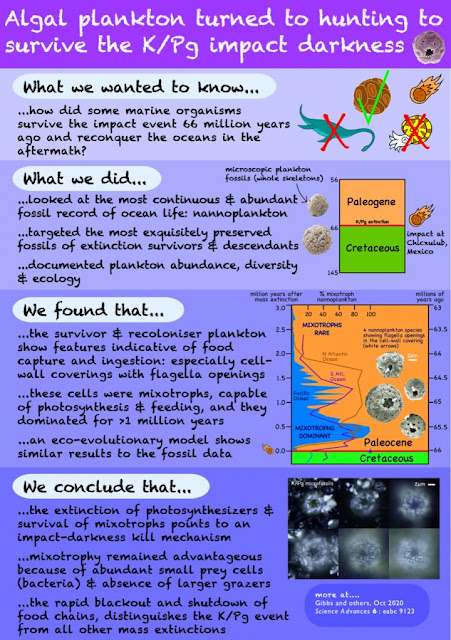Saraswati Chalisa lyrics- (For English lyrics- Click Here)
जनक जननि पद कमल रज, निज मस्तक पर धारि।
बन्दौं मातु सरस्वती, बुद्धि बल दे दातारि।।
पूर्ण जगत में व्याप्त तव महिमा अमित अनंतु।
रामसागर के पाप को मातु तुही अब हन्तु ।।
चौपाई-
जयश्री सकल बुद्धि बल रासी, जय सर्वज्ञ अमर अविनासी ।1।
जय जय जय वीणाकर धारी, करती सदा सुहंस सवारी ।2।
रूप चतुर्भुज धारी माता, सकल विश्व अन्दर विख्याता ।3।
जग में पाप बुद्धि जब होती, जबहि धर्म की फीकी ज्योती ।4।
तबहि मातु ले निज अवतारा, पाप हीन करती माहि तारा ।5।
बालमीकि जी था हत्यारा, तव प्रसाद जानै संसारा ।6।
रामायण जो रचे बनाई, आदि कवी की पदवी पाई ।7।
कालिदास जो भये विख्याता, तेरी कृपा दृष्टि से माता ।8।
तुलसी सूर आदि बिद्वाना, भये और जो ग्यानी नाना ।9।
तिन्हहीं न और रहेउ अवलंबा, केवल कृपा आपकी अम्बा ।10।
करहु कृपा सोहि मातु भवानी, दुखित दीन निजदासहि जानी ।11।
पुत्र करै अपराध बहूता, तेहि न धरहि चित सुन्दर माता ।12।
राखु लाज जननी अब मेरी, विनय करूं बहु भाँती घनेरी ।13।
मैं अनाथ तेरी अवलंबा, कृपा करहु जय जय जगदम्बा ।14।
मधु कैटभ जो अति बलवाना, बाहुयुद्ध विष्णु ते ठाना ।15।
समर हजार पांच में घोरा, फिर भी मुख उनसे नहिं मोरा ।16।
मातु सहाय भई तेहि काला, बुधि विपरीत करी खलहाला ।17।
तेहि ते मृत्यु भई खल केरी, पुरवहु मातु मनोरथ मेरी ।18।
चंड-मुंड जो थे विख्याता, क्षण महुं संहारेऊ तेहि माता ।19।
रक्तबीज से समरथ पापी, सुर मुनि हृदय धरा सब कांपी ।20।
काटेउ सर जिम कदली खम्बा, बार-बार विनवउं जगदम्बा ।21।
जग प्रसिद्ध जो शुम्भ निशुम्भा,छिन में बधे ताहि तू अम्बा ।22।
भरत मातु बुधि फेरेउ जाई, रामचंद्र बनवास कराई ।23।
एहि बिधि रावन बध तुम कीन्हा, सुर नर मुनि सब कहुं सुख दीन्हा ।24।
को समरथ तव यश गुन गाना, निगम अनादि अनंत बखाना ।25।
विष्णु रूद्र अज सकहिं न मारी, जिनकी हो तुम रक्षाकारी ।26।
रक्तदंतिका और शताक्षी, नाम अपार है दानव भक्षी ।27।
दुर्गम काज धरा पर कीन्हा, दुर्गा नाम सकल जग लीन्हा ।28।
दुर्ग आदि हरनी तू माता, कृपा करहु जब जब सुखदाता ।29।
नृप कोपित जो मारन चाहै, कानन में घेरे मृग नाहै ।30।
सागर मध्य पोत के भंगे, अति तूफान नहिं कोऊ संगे ।31।
भूत-प्रेत बाधा या दुःख में, हो दरिद्र अथवा संकट में ।32।
नाम जपे मंगल सब होई, संशय इसमें करई न कोई ।33।
पुत्रहीन जो आतुर भाई, सबै छांड़ि पूजें एहि माई ।34।
करै पाठ नित यह चालीसा, होय पुत्र सुन्दर गुन ईसा ।35।
धूपादिक नेवैद्य चढ़ावै, संकट रहित अवश्य हो जावे ।36।
भक्ति मातु की करै हमेशा, निकट ना आवै ताहि कलेशा ।37।
बंदी पाठ करै शतबारा, बंदी पाश दूर हो सारा ।38।
करहु कृपा भवमुक्ति भवानी ।39। मो कंह दास सदा निज जानी ।40।
दोहा-
माता सूरज कान्ति तव, अन्धकार मम रूप
डूबन ते रक्षा करहु, परूँ न मैं भव कूप
बल बुधि विद्या देहुं मोहि, सुनहु सरस्वति मातु
अधम रामसागरहिं तुम, आश्रय देउ पुनातु।
Related Posts-
Sarawati Chalisa Benefits-
A devotee should do Chalisa patha two times the morning and evening. If two times patha is not possible or difficult for him/her, then he/should do the Patha in every morning or evening after taking bath.
This Chalisa Patha gives peace of mind to devotee. In this patha, devotee requests Maas Saraswati to grant him/her Power, Wisdom and salvation from this material world.
A devotee also gets Knowledge (vidhya) and Devi's grace upon him.
Sarawati Chalisa in English-
Doha-Janaka Janani Pada Kamal Raja, Nij mastak par dhaari
Bandaun maatu saraswati, budhi bal de daataari
Poorna Jagat me vyaapt tav, mahima maatu anantu
Ramasagar ke paap ko, maatu tuhi ab antu.
Chaupai-
Jaya shri sakal buddhi bal raasi, jay sarvagya amar avinaasi. 1
jaya jaya jaya veenakar dhaari, karti sadaa suhans savaari. 2
Roop chaturbhuj dhaari mata, sakal vishva andar vikhyata. 3
jag me paap buddhi jab hoti, jabahi dharma ki phiki jyoti. 4
tabahi maatu le Nij avatara, paap heen karti mahitara. 5
baalmeeki ji tha hatyara, tav prasaad jaanai sansara. 6
Ramayan jo rache banayi, aadi kavi ki padvi paai. 7
kaalidaas jo bhaye vikhyata, teri kripa drishti se mata. 8
tulsi soor aadi vidvana, bhaye aur jo gyani nana. 9
tinhahin na aur raheu avalamba, keval kripa aapki amba. 10
karahu kripa sohi maatu bhavani, dukhit deen nij daasahi jaani. 11
putra karai aparadha bahoota, tehi na dharahi chita sundar mata. 12
raakhu laaj janani ab meri, vinay karun bahu bhaanti ghaneri. 13
main anaath teri avalamba, kripa karahu jaya jaya jagdamba. 14
madhu kaitabh jo ati balwana, baahu yuddha vishnu te thhana. 15
samar hajaar paanch me ghora, fir bhi mukh unse nahi mora. 16
maatu sahaay bhayi tehi kaalaa, budhi viparit kari khalhala. 17
tehi te mrityu bhayi khal keri, puravahu maatu manorath meri. 18
Chand-mund jo the vikhyata, kshan manhu sanhaarehu tehi mata.
Raktabeej se samarath paapi, sura muni hridaya dhara sab kaanpi. 20
kaateu sar jim kadli khamba, baar-baar vinavaun jagdamba. 21
jag prasiddha jo shumbh nishumbha, chhin me badhe taahi tu amba. 22
Bharata maatu budhi pherehu jaai, Ramchandra banbaas karayi. 23
Ehi bidhi ravan badh tum kinha, sur-nara-muni sab kahun sukh deenha. 24
Ko samarath tav yash gun gana, Nigam anaadi anant bakhana. 25
Vishnu rudra aj sakahin na maari, Jinki ho tum rakshakaari. 26
Rakta-dantika aur shatakshi, naam apaar hai daanav bhakshee. 27
Durgam kaaj dhara par keenha, Durga naam Sakal Jag leenha. 28
Durg aadi harani tu mata, Kripa karahu jab jab sukhadata. 29
Nripa Kopit jo maaran chaahai, Kaanan me ghere mriga Naahai. 30
Saagar madhya Pota ke bhange, ati tufaan nahin kou sange. 31
Bhuta preta badha ya dukh me, ho daridra athava sankat me. 32
Naam Jape sab mangal hoi, sanshay isme karai na koi. 33
Putraheen jo aatur bhaai, sabai chaandi poojain ehi maai. 34
Karai paatha nita yah chalisa, hoy putra sundar gun eesa. 35
Dhoopadik naivedya chadhaavai, sankat rahit avashya ho jaave. 36
Bhakti Maatu ki karai hamesha, nikat na aavai taahi kalesha. 37
Bandi paatha karai shatabaaraa, bandi paash door ho sara. 38
karahu kripa bhavmukti bhavaani, mo kahn daas sada nij jaani. 39
Doha-
Mata Suraj kaanti tav, andhkaar mam roop.
Dooban te raksha karahu, parun na main bhava koop.
Bal budhi vidya dehun mohi, sunahu saraswati maatu.
Adham Ramsagarahin tum, Ashraya dehu punaatu.











